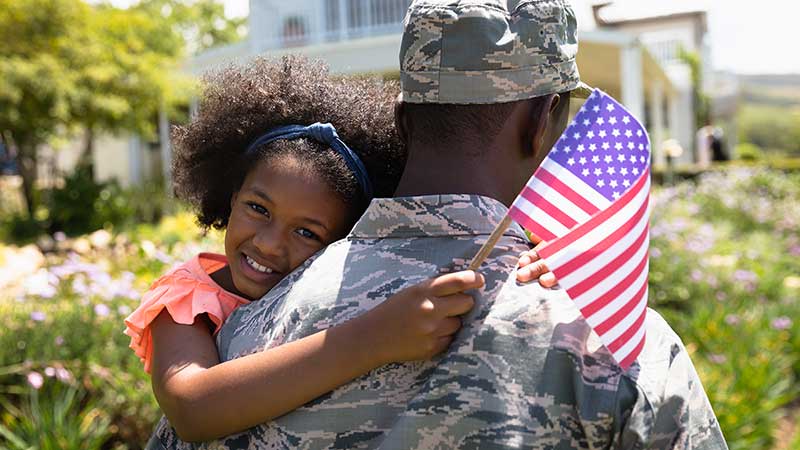
A promising initiative aims to solve a thorny problem for U.S. military service members and veterans: finding and keeping good jobs when moving to civilian life. That struggle is even greater today in the wake of COVID-19 and our weakened job market.
But help is on the way. The Military Credentialing Advancement Initiative’s (MCAI) programs are creating clear pathways to help veterans and current service members obtain civilian credentials that are linked with good jobs. The goal is to ensure that credential providers recognize, value, and reward equivalent military training and expertise.
This goal is bigger than you might think. About 200,000 veterans enter the civilian workforce each year—and, though the Department of Defense and military services have taken steps to remedy this—only 1 in 4 have the credentials needed to access good jobs with family-sustaining wages. Others are forced to retrain, re-qualify, or start over.
This is especially true for service members of color, who make up 43% of the active-duty force. One reason is this: More than 50% of Black, Hispanic, and Native American service members are in four occupational areas—food service, supply administration, combined personnel, and administration or warehousing and equipment handling—that lack clear paths to civilian credentials and jobs.
These programs are attacking the issue, by focusing explicitly on building high-quality credential pathways leading from the four occupations areas listed above with equity-minded practices:
- Indiana Wesleyan University will offer pathways to credentials that lead to a variety of in-demand jobs in aerospace, manufacturing, logistics, and quality assurance. Military service members teach many of the courses.
- Through its Military Course Crosswalk program, Lone Star College is working on new ways to recognize military learning and expedite veterans’ academic counseling services to put students on more efficient guided pathways using tools that support automation of these efforts.
- UWUA Power for America Training Trust Fund helps veterans train for careers in the electric and gas industries through low-cost, short-term classes.
- Kansas Board of Regents will partner with all military branches to improve how the state’s 32 colleges and universities credit military training. An online portal allows veterans to quickly see how their specialty training translates into credits at each school.
Each project partner has a longstanding commitment to students and workers of color that informed the review and selection of the programs, ensuring that only those with a strong track record of success in serving veterans were approved to support the MCAI. For instance, the National Training Organization has placed 685 veterans, reservists and National Guard members in utility careers – and 80 percent of them were Hispanic or Black members. These programs, supported by higher education and veteran advocacy leaders including Lumina Foundation, Greater Texas Foundation and the American Legion, will prioritize equitable results.
Strong results like this are urgently needed. A recent study showed that nearly one-third of veterans are “underemployed,” a rate that is 15.6 percentage points higher than non-veterans and rising. Being underemployed means their jobs fall short of workers’ skills and ambitions.
Race plays a significant role in the statistics. A 2019 report by Strada Education Network found that Black veterans get a smaller salary increase when they earn a non-degree credential, such as a license or certificate. Their average increase is about $5,000, compared to $15,000 for white veterans.
With much work to do, these four programs will help lead the way. As we ensure that all military learning counts, veterans and service members will earn civilian credentials that maximize what they already know and can do, allowing them to move more easily to civilian roles. As a nation, we will benefit from their rich talents and expertise. They deserve to keep learning and earning, both in the military and out.
